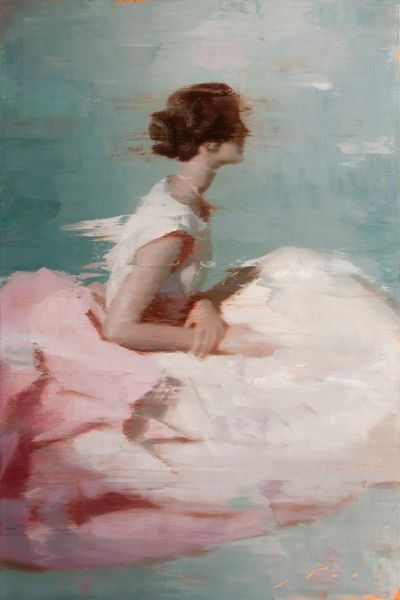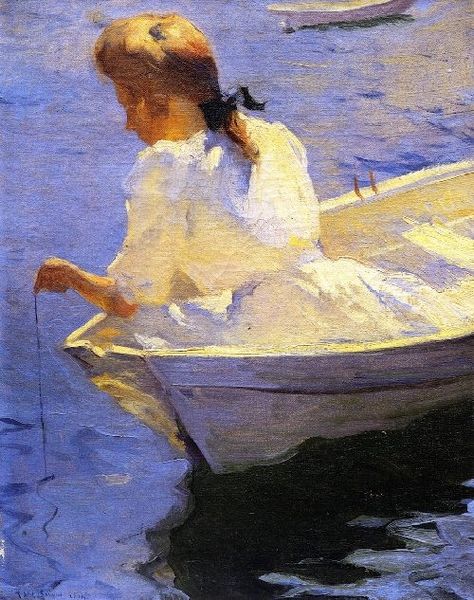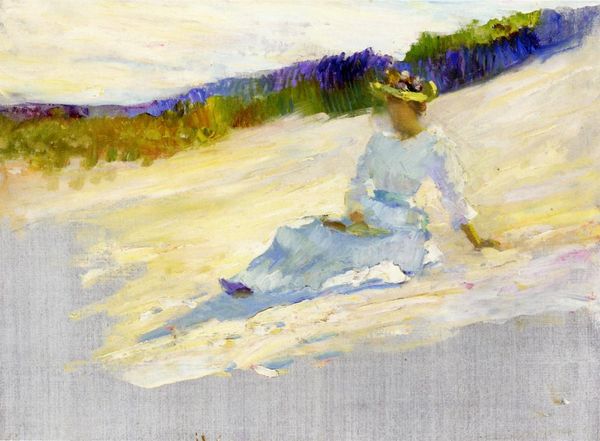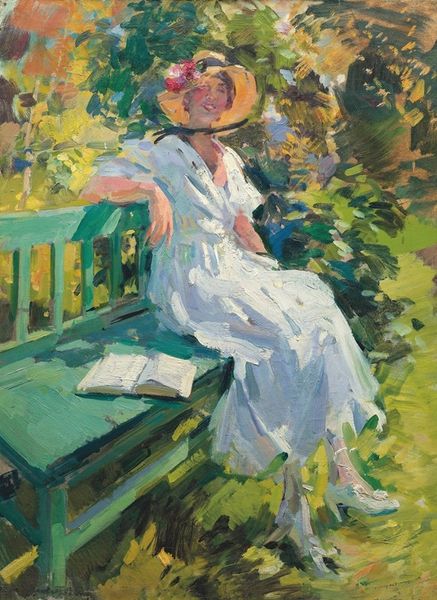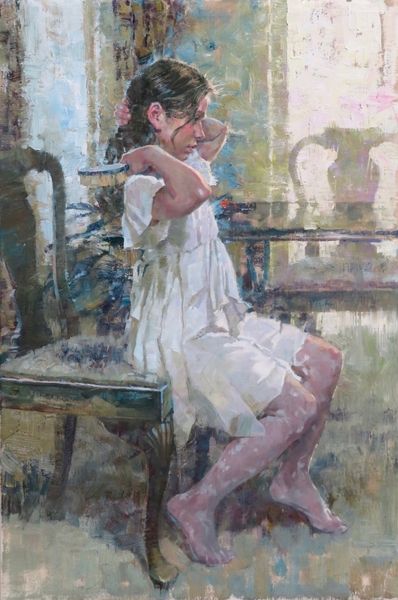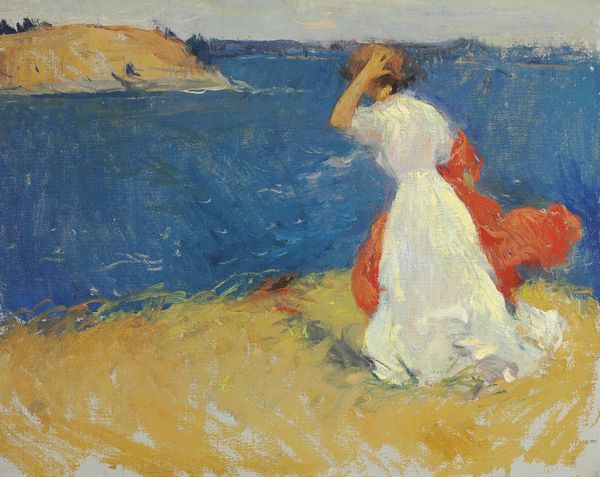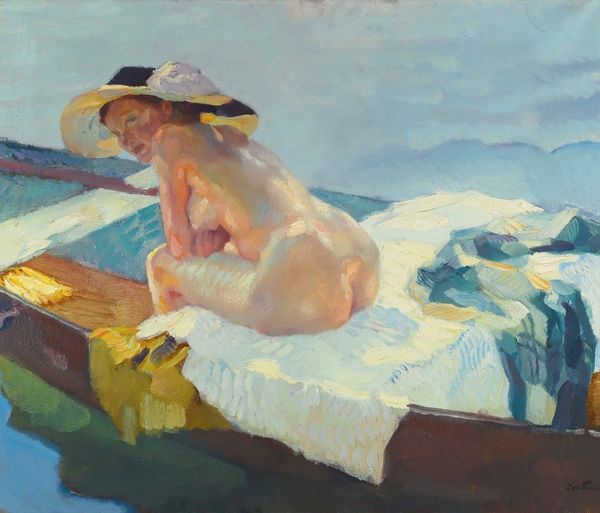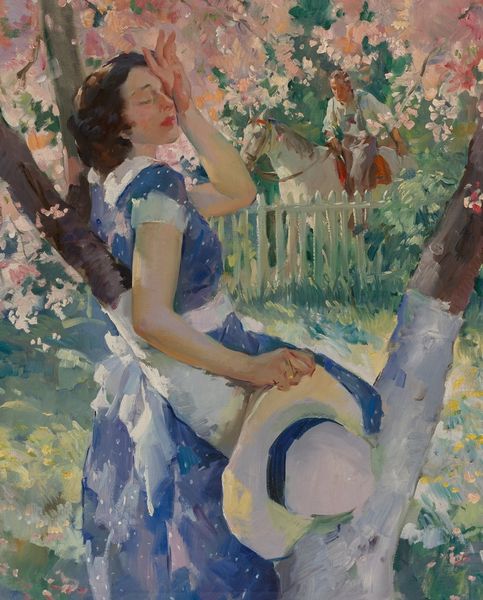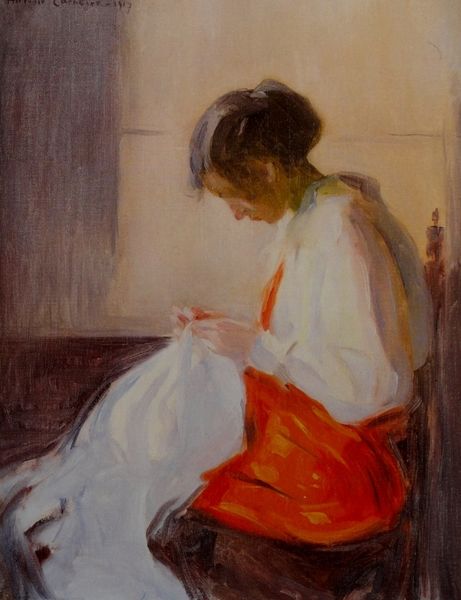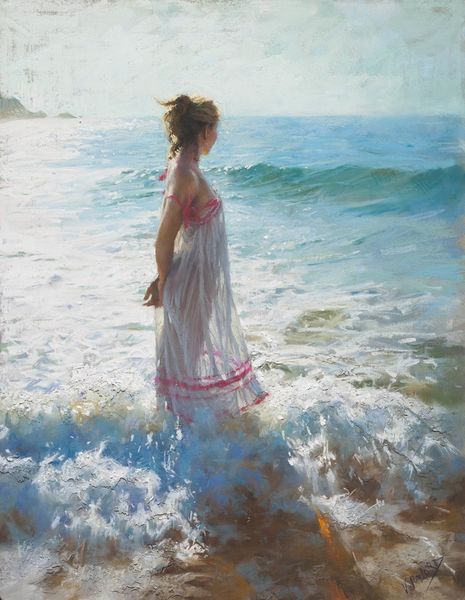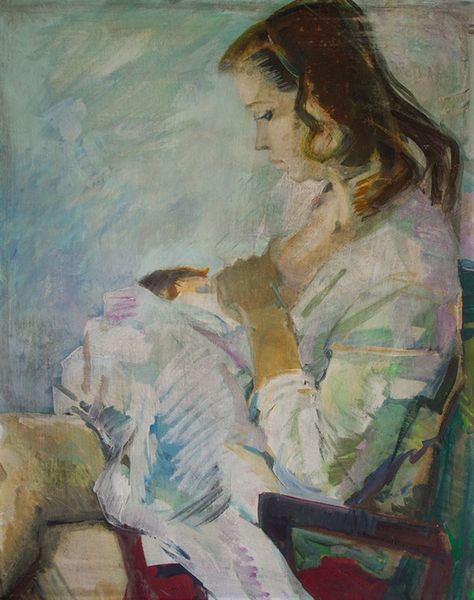
Copyright: Public domain
Editor: Clarence Gagnon's "The Painter's Young Wife, île d'Orléans," painted in 1919 using oil paints, strikes me as serene, almost melancholic. The woman seems lost in thought. How do you interpret this work? Curator: This image is compelling when considered through a feminist lens, particularly in its depiction of domesticity and leisure. The setting, île d'Orléans, suggests a retreat, but is it a choice, or an expectation tied to her role as a "painter's young wife?" The very title positions her within a patriarchal structure. Do you see hints of constraint or liberation in the brushstrokes and color palette? Editor: I hadn't thought about it like that. The bright blue and white of her dress feel free, but the way she's angled away, almost hidden, makes me wonder about the context. Curator: Exactly. Gagnon, though celebrated for his landscapes, also offers a glimpse into the gendered expectations of his time. Was this woman given the space for her own artistic expression, or was she primarily a muse, confined by societal roles? How does her posture communicate agency, or lack thereof? Editor: Her downward gaze certainly suggests introspection, maybe even a quiet resistance. The book adds another layer; is she reading, learning, or escaping? Curator: Precisely. And think about the male gaze inherent in this painting—the artist, her husband, framing her within this visual narrative. This is why intersectional art history is vital; it prompts us to question the power dynamics embedded in seemingly tranquil scenes. Editor: I see the painting differently now, more complex than just a portrait. Thank you. Curator: Indeed, art is rarely just about aesthetics. It’s a reflection of social, political, and personal realities, often deeply intertwined.
Comments
No comments
Be the first to comment and join the conversation on the ultimate creative platform.
